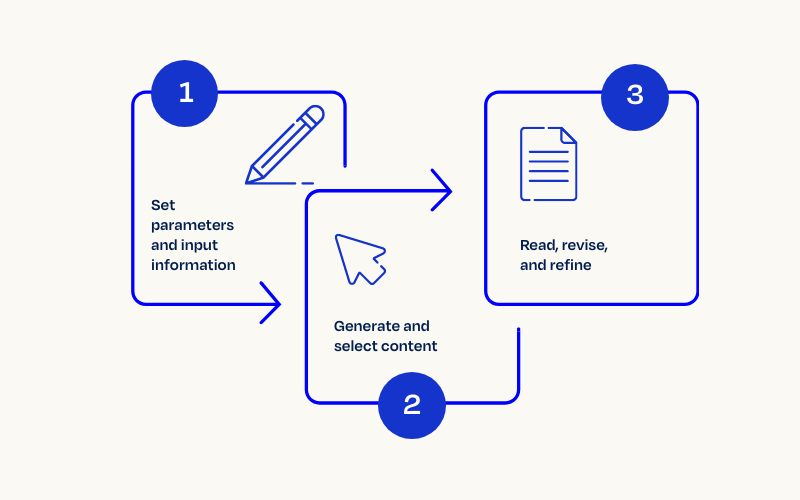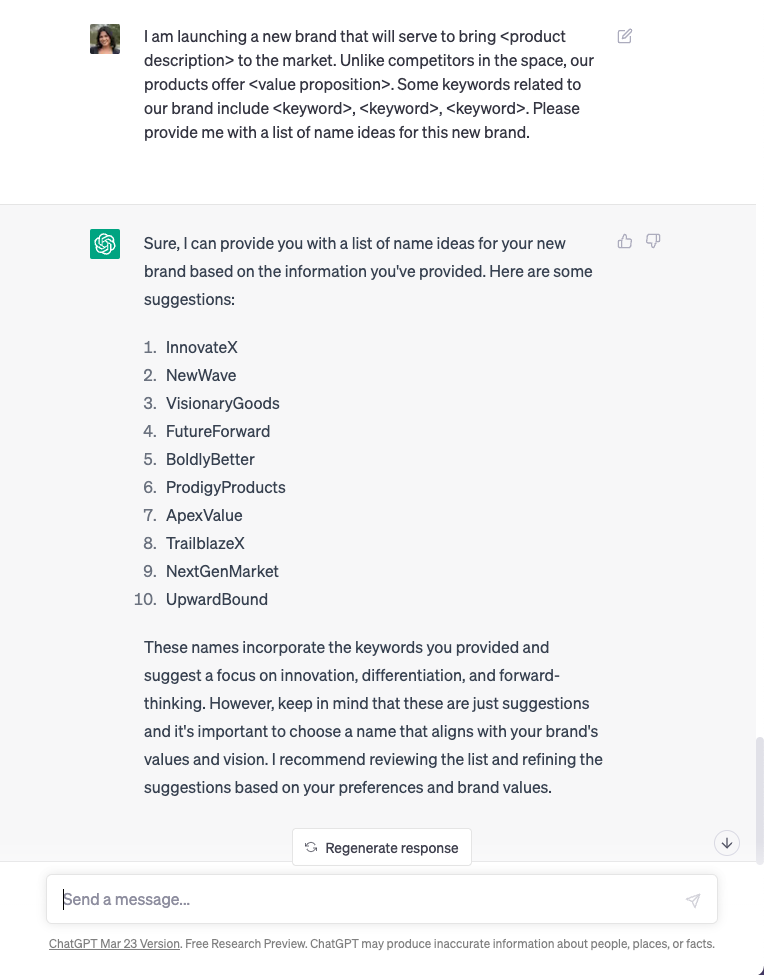In recent years, the field of artificial intelligence (AI) has made incredible strides in developing sophisticated algorithms and models capable of producing new content, ideas, and even entire works of art. This technology, known as generative AI, works by using machine learning algorithms to generate new content based on the patterns it has learned from massive stores of data. Generative AI tools are quickly gaining traction in the world of marketing, with brands and creatives around the world starting to experiment with the technology to bring their visions to life.

With generative AI tools, marketers can jumpstart their design and creative ideation process, experiment with new formats and ideas, and even help ensure their messaging resonates in the marketplace. In this blog, we will delve into the world of generative AI and explore the creative possibilities and opportunities that this technology offers.
Generative AI Tools & Process
From design to copywriting, generative AI can significantly enhance traditional ideation processes and has made it easier to create high-quality content quickly. It’s well known in creative fields the ideation process is the toughest hurdle, once an idea is conceived the execution flows naturally. So the thought of removing the age-old writer’s block or creative slump is game-changing for creative minds across every medium. However, while A.I. can produce impressive results, it’s by no means a magic wand. The tools require a great deal of human input and forethought to guide the AI algorithms and improve the overall quality of the output. In this way, generative AI is a powerful sidekick to humans, rather than a replacement.
So, how do you go about using generative AI in your ideation efforts, and what tools are available to you? Well, that answer depends on what you are trying to accomplish. If you are looking for some sort of written output, you will want to use a generative AI tool that uses natural language processing to generate a text response. If you are looking for a creative, visual output, you’ll want to use a text-to-image AI tool. Regardless, these tools will utilize an input-output format. Meaning, the generative AI models are trained to follow instructions in a prompt provided by the user and generate a human-like response in the form of a detailed, written answer or image.

Now, where to start? There are countless generative AI tools out in the market today that can be leveraged as creative writing and design jump-off points. ChatGPT, from OpenAi, is a free (and increasingly popular) online conversation tool and language model that can be used for various applications including answering questions, writing content, text translation, topic research, or report generation. In the world of marketing, ChatGPT can aid in writing content and blog posts, creating brand messaging, and even name ideation.
Jasper is another AI copywriting tool that is particularly great for headline ideation and social media content writing. Jasper also enables you to experiment with different messaging and see what copy resonates the best with your audience. Jasper has a browser extension that allows the model to help improve and create tailored content for your brand, anywhere you are working online. Similar to ChatGPT, Jasper works based on prompts. You can choose between utilizing pre-made templates or open-ended commands in order to guide the model to produce content output you’re looking for.
Here’s a quick example of what using one of these copywriting tools (ChatGPT) for help with a naming project may look like:
- Building your prompt: First, you’ll want to provide ChatGBT with some relevant information about your brand or product so it can understand the context of your request. Start by defining your brand or product in a few simple sentences and provide ChatGPT with some related keywords and key differentiating factors. Then, ask ChatGPT to generate name ideas for your brand or product based on the information and keywords you provided.

- Refining the output: After ChatGPT generates a list of name ideas, review the suggestions and refine them based on your preferences, brand values, or market trends. Remember that A.I. is based on machine learning, which takes feedback data to generate more content similar to the positive outputs and less like the content with negative outputs. Much like training a dog, you must make it clear what outputs you want to positively or negatively reinforce to shape the desired behavior. And ultimately, practice makes perfect. The more inputs and feedback you provide, the more data A.I. tools collect and leverage to improve their outputs. ChatGPT will generate more suggestions based on the refined criteria, and repeat the cycle until you see a name that fits your vision or sparks new ideas of your own.

Much like copywriting, there are several design and visual-focused generative AI products available to marketers and creatives alike. In addition to ChatGPT, OpenAI has also created an AI model focused on visual output. Named DALL·E 2, this model can transform natural language descriptions (or prompts) into realistic images and art. Two other popular text-to-image models include Stable Diffusion and Midjourney, the latter of which was recently leveraged by Bluetext on a client project.
Generative AI Takeaways
Because generative AI is not a perfect technology, in order to get the most out of these tools, it is essential to understand their strengths and limitations.

Some of the main benefits of generative AI include:
- Creativity & Exploration: Generative AI tools have the ability to generate novel and creative outputs that can be used for a wide range of marketing purposes. They can explore new ideas and insights that may not have been discovered through traditional methods.
- Efficiency: Generative AI tools can automate tasks that would otherwise be time-consuming or difficult for humans to perform, such as generating complex visual or written content.
- Personalization: Generative AI tools can create customized outputs based on specific inputs or user preferences, which can be used to create personalized products or services.
In contrast, generative AI tools have several limitations and concerns, some of which are:
- Output Bias: Generative AI tools can amplify biases present in the training data, leading to outputs that reflect societal or cultural biases.
- Limited Control: Generative AI tools can sometimes generate outputs that are difficult to control, leading to unpredictable or undesirable results.
- Contextual Understanding: Generative AI models cannot comprehend the nuances of human language, emotions, or cultural references, which can result in inappropriate or nonsensical output.
- Intellectual Property: Ownership and copyright of content generated by these tools is unclear, leading to potential legal challenges.

Actual or A.I.? This image of the Pope sporting a Blenciaga puffer jacket went viral as an example of A.I.’s powerful potential to trick viewers.
In conclusion, the potential of generative AI tools is vast and can have a transformative impact on creative processes. However, it is important to acknowledge AI’s imperfections. Keep in mind at the crux of A.I. is machine learning, meaning the technology is always learning, digesting more data to refine its ability and improve outcomes. The more practice and use these tools get the better the ultimate result. Creatives and marketers should approach their use with realistic expectations and carefully consider their application in specific contexts, but embrace the possibilities and inspiration the technology offers with open arms. And remember – there is a certain level of human input that will always be required to make creative visions come to life.